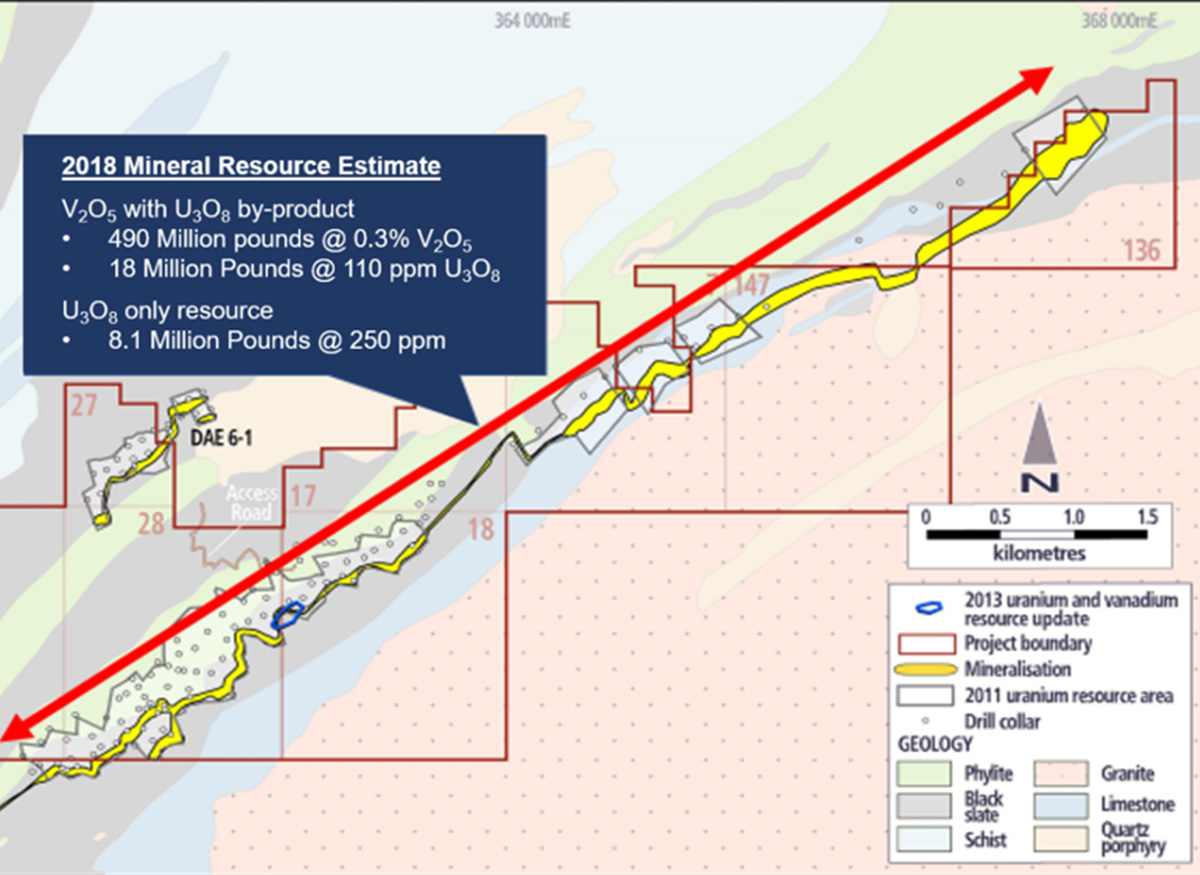Protean just doubled its vanadium resource in Korea

Special Report: Minerals explorer and battery maker Protean Energy has increased its vanadium resource estimate by a whopping 99 per cent, effectively doubling the June interim estimate.
Protean (ASX:POW) now has a resource of 490 million pounds of vanadium pentoxide (V2O5).
A mineral resource is generally discovered during exploration and may be sub-divided into inferred, indicated and measured categories.
Protean’s resource update comes after a phase 2 portable X-ray fluorescence (PXRF) assay program in the 8.3km Daejon mineralisation strike.
The Daejon deposit includes both vanadium and uranium.
The new combined resource estimate rises to 76 million tonnes (Mt) at 0.3 per cent vanadium pentoxide and 110 parts per million (ppm) of triuranium octoxide (U3O8), for a total of 490 million pounds of the former and 18 million pounds of the latter.
The Daejon project has an indicated resource of 3.6 Mt of 0.3 per cent vanadium pentoxide and 140 ppm of triuranium octoxide.
By moving resources into the indicated category, it means a company has sufficient information on geology and grade continuity to support mine planning.
Inferred resources are estimated using limited geological evidence and sampling information, which means there is not enough confidence to evaluate the project’s economic viability.

The Daejon project is targeting the South Korean domestic vanadium market, which uses 17 million pounds a year, by signing offtake supply agreements with a strategic Korean partner.
The next step is pilot plant metallurgical testwork including ore benefaction and process optimisation.
How Protean doubled its resource
Protean owns half of Stonehenge Korea (SHK), the operator of the tenements in the Daejon region that contain uranium and vanadium resources.
In 2011, SHK completed a mineral resource estimate at the Daejon uranium project using historical eU3O8 gamma data, and in 2013 drilled five diamond drill holes looking for, amongst other elements, uranium and vanadium.
This provided the basis for a uranium resource estimate and a maiden vanadium estimate in 2013.
But in January, Stonehenge started a p-XRF testing program of a core held at the Korean Institute of Geoscience and Mineral resources (KIGAM) and found enough evidence to support the current indicated and inferred Mineral Resources at Daejon.
- Subscribe to our daily newsletter
- Bookmark this link forsmall cap news
- Join our small cap Facebook group
- Follow us on Facebook or Twitter
The Daejon vanadium/uranium and uranium mineralisation is hosted in black shale.
It found that both vanadium and uranium mineralisation occurs as multiple, variably mineralised lodes within the respective black shales, and broadly co-located.
Protean said it only classified material shallower than 300m in its resource estimate because anything deeper wouldn’t be likely to support open pit mining, and it excluded anything within 200m of a nearby road tunnel.
“Most of the material shallower than 300m has been classified as an inferred mineral resource,” it said.
“The uranium only resource has been classified as an inferred mineral resource at best, because of the lower precision observed to date in the p-XRF data.”
This special report is brought to you by Protean Energy.
This advice has been prepared without taking into account your objectives, financial situation or needs. You should, therefore, consider the appropriateness of the advice, in light of your own objectives, financial situation or needs, before acting on the advice.
If this advice relates to the acquisition, or possible acquisition, of a particular financial product, the recipient should obtain a disclosure document, a Product Disclosure Statement or an offer document (PDS) relating to the product and consider the PDS before making any decision about whether to acquire the product.
UNLOCK INSIGHTS
Discover the untold stories of emerging ASX stocks.
Daily news and expert analysis, it's free to subscribe.
By proceeding, you confirm you understand that we handle personal information in accordance with our Privacy Policy.







